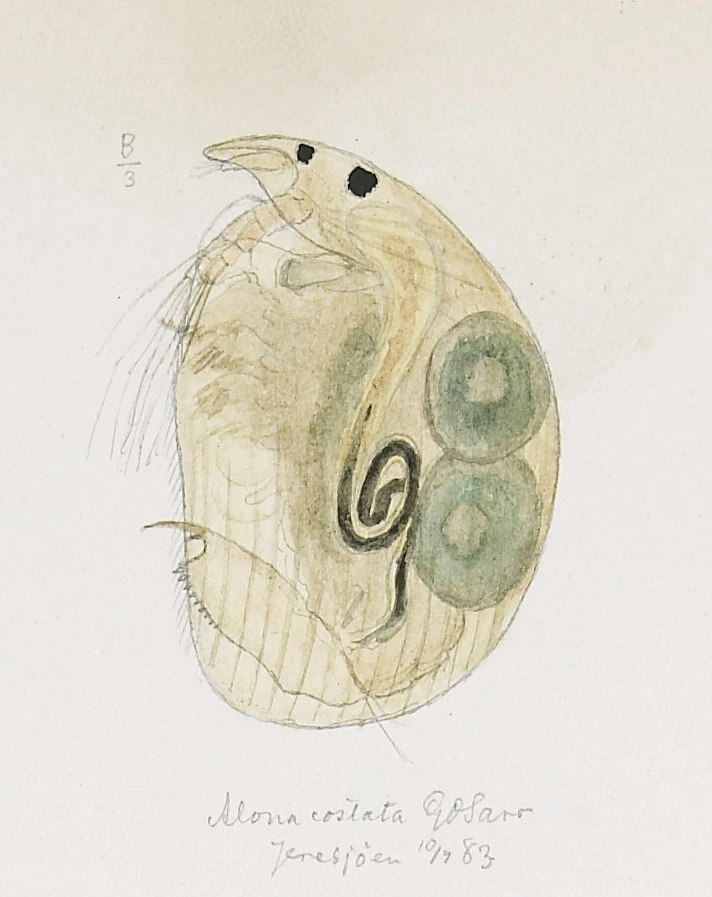Alona rustica
Alona rustica has a deep brownish yellow colour and postabdomen has a curved posterior corner covered with relatively long and coarse teeth at the dorsal edge. It is associated with a sphagnum type substrate and is known as an indicator of acid lakes.
Key characteristics
Alona rustica was earlier mixed up with A. costata, which is somewhat larger. The carapace of A. rustica has no distinct longitudinal stripes, while the postabdomen has a curved posterior corner covered with relatively long and coarse teeth at the dorsal edge. Its lateral head pores are twice as long as in A. costata, and it is also darker having a brownish yellow colour.
Female: Length 0.3–0.6 mm
Male: Length 0.3–0.4 mm
Ecology and distribution
A. rustica is a littoral species which is found in nearly 14 % of the localities and is distributed all over the country, with the highest number of records from the southern parts. It occurs from sea level and up to 1268 m a.s.l., and though it is found in water bodies of all sizes, it is most common in lakes >1 ha. It is often associated with a sphagnum type substrate and is known as an indicator of acid lakes. At pH 4.5–4.9 it is found in 46 % of the localities. It is common in electrolyte poor water (<5.0 mS/m).
| Vitenskapelig navn | < 4,5 | 4,5 - 4,9 | 5,0 - 5,4 | 5,5 - 5,9 | 6,0 - 6,4 | 6,5 - 7,0 | 7,0 - 7,4 | > 7,5 |
|---|---|---|---|---|---|---|---|---|
| 9 | 46,1 | 25,2 | 28 | 16,4 | 6,2 | 3,6 | 3,2 |
| Vitenskapelig navn | < 1,0 | 1,0 - 1,4 | 1,5 - 1,9 | 2,0 - 2,9 | 3,0 - 3,9 | 4,0 - 4,9 | 5,0 - 6,9 | 7,0 - 9,9 | > 10,0 |
|---|---|---|---|---|---|---|---|---|---|
| 13,8 | 19,2 | 22,4 | 18,4 | 21,4 | 13 | 8,2 | 4,6 | 6,6 |
| Vitenskapelig navn | < 0,01 | 0,01 - 0,09 | 0,1 - 0,9 | 1,0 - 9,9 | 10,0 - 99 | 100 - 999 | > 1000 |
|---|---|---|---|---|---|---|---|
| 3,9 | 5,5 | 9,3 | 15,3 | 19,4 | 17,2 | 10,9 |
| Vitenskapelig navn | < 100 | 100-299 | 300-499 | 500-699 | 700-999 | >1000 |
|---|---|---|---|---|---|---|
| 7,9 | 20,9 | 15,4 | 20,2 | 17,1 | 2,5 |
Look-alikes
Alona costata and A. guttata


